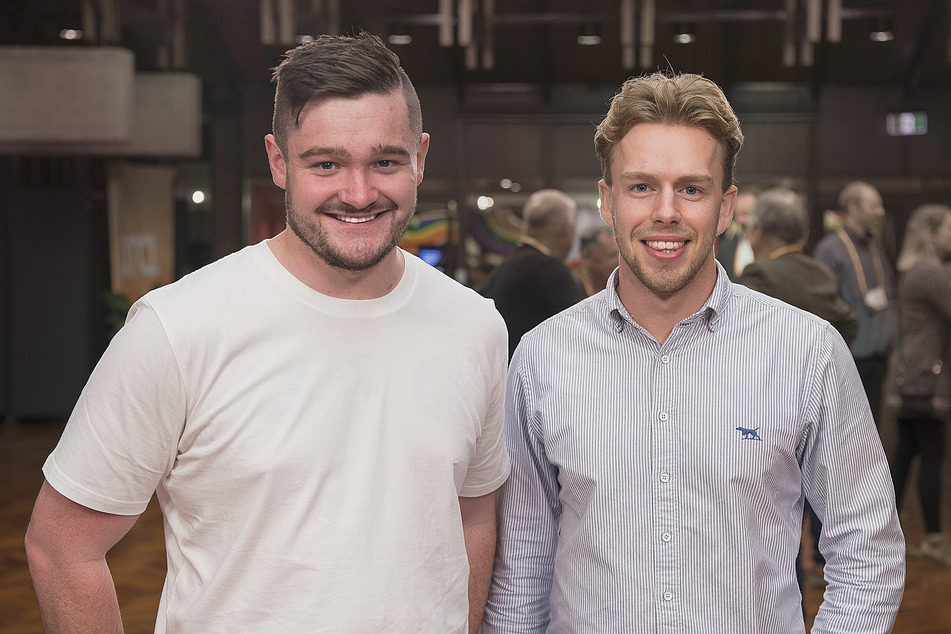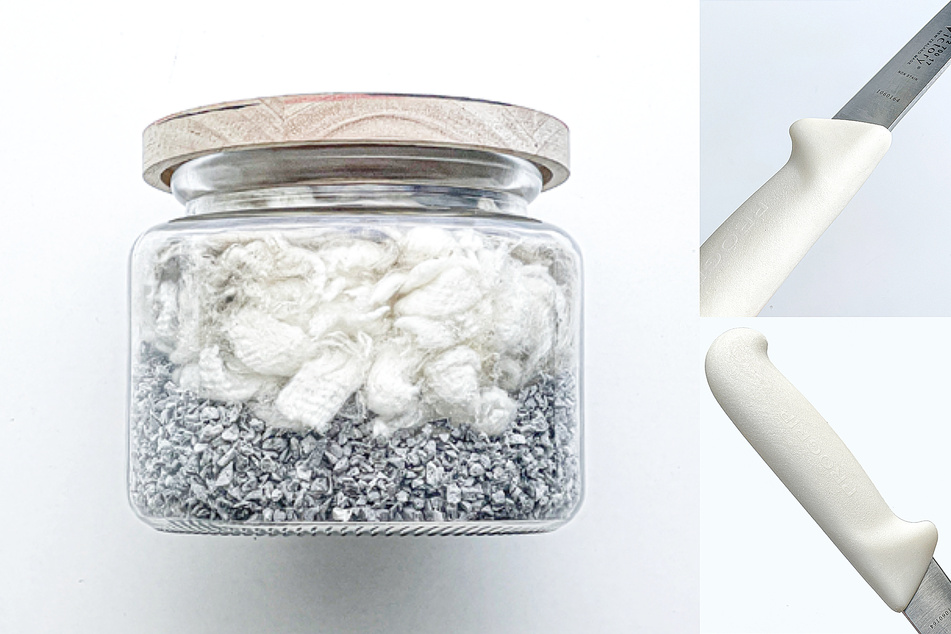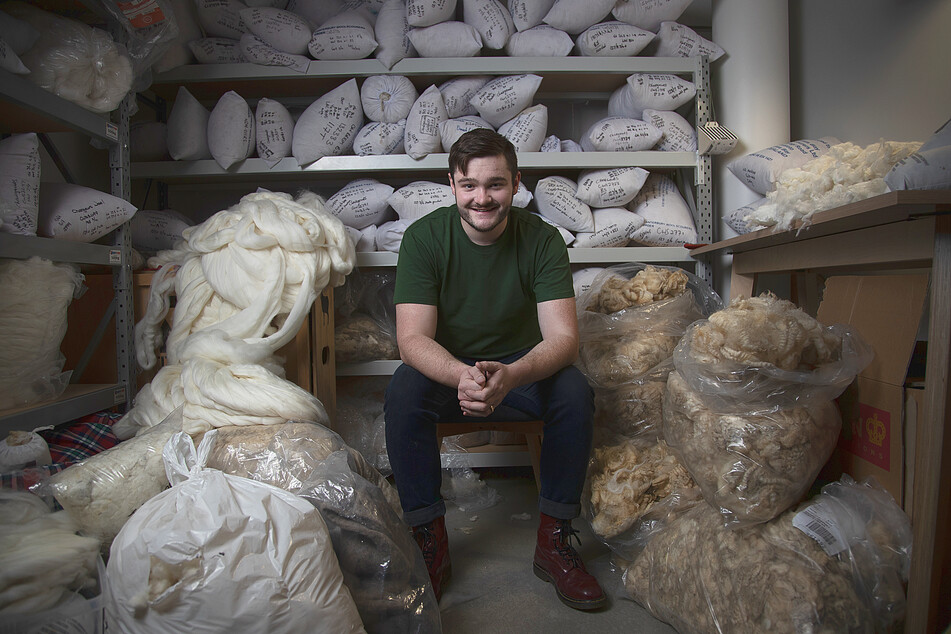Shear Magic: Cutting-edge company invents woolly great green plastic
Christchurch, New Zealand - Making plastic sustainable would be a huge win in the race against the climate crisis – and one Kiwi team has already left the starting blocks.

Feeling sheepish about how to get your feet wet with climate action?
Innovation is a key to the rapidly evolving environmental crisis, as shown by one duo making a big difference. TAG24 got the low down from Shear Edge, a New Zealand company that makes renewable plastic by simply adding wool.
Thomas Nye, the company's Head of Marketing and Sales, clued us in as to how sheep could actually be the golden ticket to making plastic sustainable.
The company, which started in 2020, mixes wool and plastic to make everyday products that are stronger and better for the environment.
Nye's partner-in-crime Logan Williams, an inventor and entrepreneur, is the man responsible for coming up with the new production process.
"My friend and business partner Logan was the crazy scientist man who came up with the process of Keravos technology," Nye told TAG24.
The Keravos process relies on reinforcing plastic with wool to make sustainable plastic building blocks. Originally, Williams' goal was to revamp the Kiwi wool industry when he teamed up with New Zealand Merino, a company that uses the merino sheep breed and its unique, thinner strain of wool.
"Merino is a very fine strand ranging between around 12 microns, but going all the way up to around 25 micron thickness," Nye explained, as opposed to "strong wool, which is very coarse and rough, and what they make carpets and upholstery out of. So less clothing and textiles."
The wool industry had been "in rapid decline in New Zed," he said.
"That sort of industry had been taken over by synthetic fibers, because they were faster to produce. They were a lot more efficient. It was costing farmers more to actually sheer the sheep for strong wool than they were actually getting for the wool itself."
That's where Williams and his Keravos process stepped in, as he realized he could use the specialized wool to carry out his mission to support New Zealand wool farmers while also making plastic better.
"It was based on first principles, whereby you can add a synthetic fiber to polymers and plastics as a reinforcing agent, as a plastic off-setter," Nye said of their first try with their new experiment. "And why couldn't you do the same with it with a natural fiber?"
The launch of wooly plastic products

Since then, Shear Edge has certainly made a splash with its wool-based product line – with many finding it hard to believe that the company's products actually have wool in them at all.
"When we launched, those people were sort of amazed and didn't believe us that it was real," Nye said. "We went to a big agricultural show in New Zealand that has about 130,000 people who go to it every year."
There, they debuted the first prototypes of their plastic products, including a kayak, knives, and a full-on boat – all made with about 70% wool by volume.
"People just didn't believe us that it was," Nye continued. "That's brilliant if you can actually make a change whereby the products look pretty similar. They feel pretty similar. But upon closer inspection, you can actually see the wool fiber, and you have this story and completely different product differentiation that nothing's ever had before."
The products have come a long way. Nye explained that some early models actually had wool fibers sticking out of them, making them fuzzy.
"One of the issues we had very early on when we were trialing the process was packing in as much wool as we could into our process. You get to a stage where the wool starts to permeate the exterior of the plastic. And so you get woolly products, literally. Which isn't exactly what you want when you're making these high-performance goods trying to be beautiful, sustainable products," he said.
But it wasn't long before the team smoothed out the kinks – quite literally.
The wool-plastic blends have created a buzz

Now, the company has developed four main blends of wool and plastic based on different types of plastic and varieties of wool. New Zealand Merino sources "the world's leading ethical wool" materials in projects named ZQ and ZQRX, which create "regenerative wool."
The company has created blends with names like Universal, Lite, Tough, and Bio – a groundbreaking blend with the strength level needed for disposable plastics.
Nye broke things down even further: "So Bio is a great example of innovation with plastics – it's polylactic acid (PLA) as our base polymer for that. PLA has traditionally been used in things like packaging and disposable coffee cups and bits and pieces, because it's more of a bio-based industrially compostable plastic and doesn't have the performance characteristics to go on to high value products."
"It's also used in 3D printing. It's one of the main filaments that you would see," he added.
The company's Tough blend comes into play for products that need to be far more durable, like the company's kayaks.
"So our Tough is a high density polyethylene. In about a month's time, we're launching the world's first woolen kayak, which is made from a polyethylene," Nye said of the company's plans to keep pushing the envelope.
That's right, a kayak made of wool and plastic. What a time to be alive.
"They're actually coming into market and will be purchasable in about six weeks, which is very cool."
Getting to 100% sustainable wool-based plastic

Shear Edge is also already planning on making 100% sustainable products, but the challenge along the way will be keeping the performance up to snuff.
According to Nye, the team is always trying "to increase the amount of wool" in their materials while continuing to "increase the performance."
"All of our materials have increased impact strength, tensile strength, tear strength. They're overall more durable. They're lighter weight. And we want to continue to have those performance characteristics while also increasing that wool volume."
Right now, the company already recycles as much as it can, starting with its production line. Its next step will be using only Post-Consumer Recycled (PCR) plastic to blend with wool.
Plus, partner stores send Shear Edge's products back to the company at the end of their lifecycle, so they can be ground down and recycled – ready to be remade into new woolly plastic.
"We're trying to build that in with all of our brand partners. So for the kayak which is coming out in six weeks, we've built in a take back program with them ... If anybody takes the kayak back to any of the stores that are retailing this in New Zealand, we will take it back to our factory, re-grind it, and reuse that material," Nye said.
"That's our company's motto. Our ethos is that we want product design to be this relationship between nature and living. Whereby any product that's made for us people – living people – we want it to be made from natural or reusable products. We want other companies to start this transition."
As consumers flock to the new green plastic products, Shear Edge is clearly leading the herd.
Cover photo: Courtesy: Shear Edge

